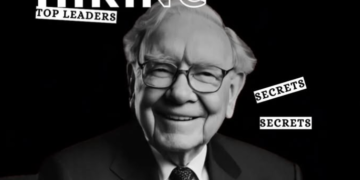In a bold statement that has stirred up discussions across the entertainment industry, Netflix CEO Ted Sarandos declared the traditional movie theater model as “outdated” and no longer aligned with the demands of today’s audience. The comments were made during the Time100 Summit in New York, where Sarandos shared his views on the evolving landscape of film distribution and consumption.
The Shift in Viewing Habits: A Streaming Revolution
For decades, movie theaters were the undisputed home of film premieres and the go-to destination for movie lovers. But with the rise of streaming services like Netflix, which revolutionized how audiences consume content, the dynamics have shifted. Sarandos pointed out that consumers today are more inclined to enjoy films from the comfort of their homes, choosing convenience over the traditional theater experience.
According to Sarandos, the widespread availability of streaming platforms, which provide instant access to a vast library of films and TV shows, has fundamentally altered audience expectations. “We’re in the middle of a revolution, and the theater model simply doesn’t meet the needs of today’s viewers,” Sarandos said. “People want flexibility—they want to watch what they want, when they want.”
With the explosion of home entertainment technology, such as 4K TVs, Dolby sound systems, and streaming devices, watching films at home has become an experience that rivals the movie theater for many viewers. This shift has raised questions about the future of cinemas and whether they can survive in an era dominated by streaming giants.
The Disagreement: Rian Johnson and the Cinematic Experience
However, not everyone in the film industry agrees with Sarandos’ assessment. Renowned director Rian Johnson, best known for films like Knives Out and The Last Jedi, took a public stand against the notion that movie theaters are becoming obsolete. Johnson, whose work has been distributed through both theatrical releases and streaming platforms, expressed strong support for the traditional movie theater experience, emphasizing the unique communal atmosphere it offers.
“I think there’s still something special about seeing a film with an audience in a theater,” Johnson said. “The experience of sharing a movie with a room full of strangers creates a sense of connection, something streaming can’t replicate.”
Johnson, who is gearing up for the release of his upcoming film Wake Up Dead Man in 2025, also pointed to recent successes in the theater, such as the Sinners film and A Minecraft Movie. He argued that films released in cinemas continue to draw significant audiences and remain culturally important.
While Sarandos advocates for the flexibility of streaming, Johnson contends that theatrical releases provide something irreplaceable: the experience of a shared, collective viewing. “The theater remains a space for cinematic art,” Johnson added. “It’s the birthplace of ideas, and it’s where we see films as they were meant to be experienced.”
The Future of Movie Distribution: A Changing Landscape
This debate between Sarandos and Johnson reflects the larger conversation about the future of film distribution. In the face of rising streaming dominance, movie theaters are finding themselves under pressure. While streaming offers unparalleled convenience and on-demand access, it also changes how audiences interact with films.
Sarandos’ comments underscore Netflix’s position as a major player in the shifting landscape of film consumption. The streaming service’s ability to release films directly to subscribers without the constraints of theater windows has helped change the industry’s norms. In fact, many major Hollywood studios have embraced the hybrid release model, debuting films on streaming platforms while simultaneously screening them in theaters.
On the other hand, many filmmakers, like Johnson, argue that the enduring appeal of cinemas lies in their role as cultural hubs. Movie theaters are places where films come to life, where the audience’s collective energy becomes part of the experience. According to this school of thought, no matter how convenient streaming becomes, it will never fully replace the magic of a shared cinematic experience.
What This Means for the Industry
As the film industry continues to evolve, it’s clear that the traditional theater model is at a crossroads. Streaming services have revolutionized how we consume films, and as Sarandos pointed out, their rise signals a shift in how audiences engage with entertainment. The convenience of watching films from home, without the need for expensive tickets or travel, makes streaming platforms a formidable competitor to the theater industry.
However, the success of films like Sinners and the enduring popularity of franchises like Marvel show that movie theaters still hold a significant place in the cultural landscape. While the theater industry faces challenges, it’s not necessarily doomed. The communal experience of going to the movies, the sense of occasion that comes with seeing a film on the big screen, is still something many viewers cherish.
It’s clear that the future of film distribution will likely involve a balance of streaming and theatrical releases, with streaming offering flexibility and accessibility, while theaters continue to provide an unmatched social and sensory experience. The ongoing debate between Sarandos and Johnson reflects the broader tension between these two models and underscores the need for adaptation in an industry that is in the midst of a major transformation.
Conclusion
The conversation surrounding the future of movie theaters and streaming platforms is far from over. While Ted Sarandos believes that the traditional movie theater model is outdated, filmmakers like Rian Johnson remind us of the irreplaceable qualities of the cinematic experience. In the end, the future of film distribution will likely require a blend of both models, as consumers continue to embrace the convenience of streaming while still valuing the magic of the theater.
As the debate continues, one thing is clear: the way we watch movies is changing, and the film industry must adapt to meet the demands of today’s audience. Whether it’s a streaming platform or a traditional cinema, the experience of enjoying a great film will remain at the heart of what makes the medium so special.







































